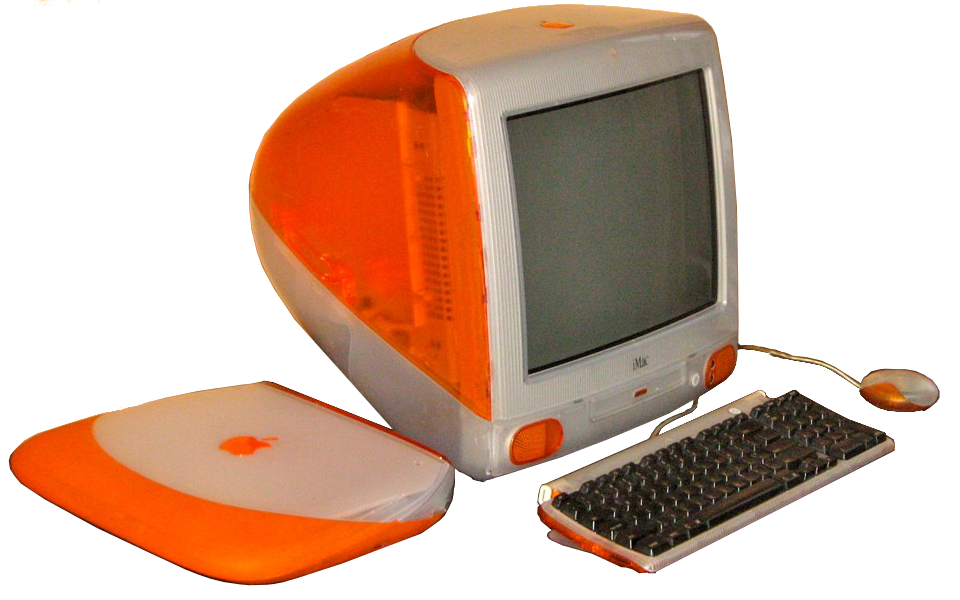This article comes with a recommended soundtrack: the soothing sounds of the IBM PC. The article also comes with a suggested color: beige.
If you’re thinking of beige and playing the sounds of yester-year, you’re ready to come with me on a trip of nostalgia. It was the late 1990s and several years into my career. I had spent time wiring up IBM computers to Novell NetWare servers. I had run a systems integrator business, assembling computers for the local market. The turn of the century found me at a value-added reseller who specialized in mixed Microsoft and Apple environments, which was tricky back in the day.
That’s when beige turned to color. That’s when the world grew quiet.
The Apple iMac had arrived.
The industrial design work was led by Jony Ive. Ive pushed the Most Advanced, Yet Acceptable (MAYA) principle to its limit. The original Macintosh was an all-in-one form-factor. The iMac was, too, but with a Googie spin. It felt like a Jetson’s computer. But Apple was clear it was an Apple. The 1984 Macintosh said “Hello.” The 1998 iMac? “Hello again.”
As pretty as it was, the iMac was no toy. “The iMac isn’t about candy-coloured computers,” Jony Ive said. “The iMac is about making a computer that is really quiet, that doesn’t need a fan, that wakes up in fifteen seconds, that has the best sound system in a consumer computer, a superfine display. It’s about a complete computer that expresses it on the outside as well.”
The iMac featured:
- Sleek, curved, translucent in a time when all computers were square
- A departure from legacy tech; such as the floppy disk drive, serial port, and the SCSI port
- An embrace of emerging standards; USB, Ethernet, and WiFi
- An integral architecture; say when a CRT mount also reduces heat and increases beauty
None of this is an easy leap to make in a design. We tend to benchmark and copy the success of others. For example, a wave of translucent colored plastics crashed over all product categories following the iMac’s success. Walk the vendor arena at the next major conference to see the same thing happen in cyber security. Another challenge is in letting go of the past. Dell still offered computers with floppy disk drives in 2006, nearly a decade after Apple moved on. Many security programs have a similarly hard time letting go of processes and technology, long past when they’ve stopped adding value. It’s hard.
When developing the technology architecture for a new security capability, channel Ives by asking the following questions.
- How can we challenge old assumptions about how things are done?
- What are we currently doing that we can simply stop doing?
- What technology do we have today that we can repurpose into something useful?
- How can we make our work attractive to end-users?
I never forgot the first time I saw the iMac, when I heard the iMac. Beautiful. Whisper quiet. The VAR I worked with at the time was an Apple partner. They also sent us a full set of promotional posters. One still hangs in my study today. Think Different. If only it was that simple.
“The thing is, it’s very easy to be different, but very difficult to be better.”
– Jony Ives
Afterward
Ken Segall is an ad man and the author of Insanely Simple: The Obsession that Drives Apple’s Success. Segall is also the man who put the i in iMac. Steve Jobs originally had a different opinion. “He wanted us to come up with a really good name, he called us in one day and said I have a name that I really like, we’re going to go with it, but if you guys can do better we need you to do better within the next two weeks. So his name was, yes it’s true, MacMan.”
Listen to him as Ken Segall tells the story on YouTube. It’s a reminder that, with computer products or security projects, the name tells a story.

This article is part of a series on designing cyber security capabilities. To see other articles in the series, including a full list of design principles, click here.
Posted by